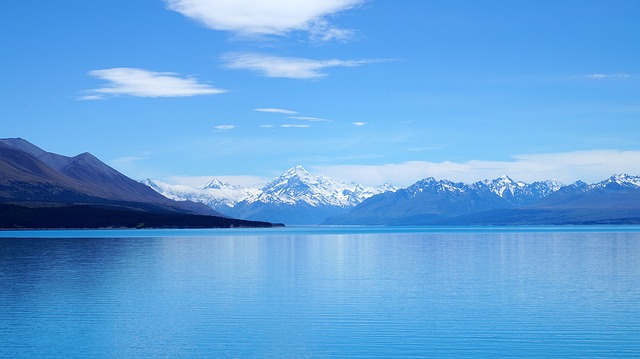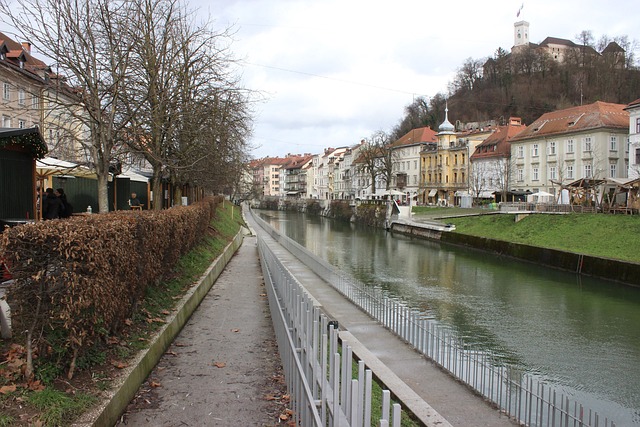Karachi, located on the Arabian Sea, experiences a hot and arid climate with significant seasonal variation. The Southwest Monsoon from mid-June to September brings most of its rainfall, which is crucial for water resources but can lead to flooding due to heavy downpours. Outside this period, the city is mostly dry, especially during the winter months. Heatwaves in Karachi are a major summer challenge, exacerbated by the urban heat island effect and warm sea currents. These events can threaten public health and disrupt daily life. To address these issues, local authorities must closely monitor weather patterns and develop strategies such as cooling facilities and hydration centers. The Meteorological Department's forecasts are vital for preparing against flooding and storm surges, particularly with this year's predicted above-normal monsoon. Wind patterns also play a significant role in Karachi's climate, influencing the city's seasonal weather changes and necessitating tailored strategies for urban planning and disaster management. Recent years have seen an upward trend in average temperatures in Karachi, reflecting global warming trends and prompting the need for urgent adaptation measures to manage increased heat and potential changes in precipitation patterns, which have become less reliable with more severe weather incidents. The city's changing climate requires resilient urban planning and sustainable practices to protect its population from these new challenges.
7 Key Takeaways from Karachi Weather News Today by Samaa offers a comprehensive analysis of the city’s atmospheric conditions, from daily precipitation patterns to long-term climate trends. This article delves into the complexities of heatwaves and monsoon season predictions, elucidating the significance of wind dynamics in shaping Karachi’s unique weather. Additionally, it examines the implications of air quality on public health, emphasizing Samaa’s role as a reliable source for timely weather updates. Readers will gain valuable insights into preparing for and understanding the weather patterns that affect Karachi, ensuring they are well-informed to navigate the city’s diverse climatic experiences.
- Daily Precipitation Patterns in Karachi
- Understanding Heatwaves in Karachi
- Monsoon Season: Preparedness and Predictions
- Wind Dynamics and Their Impact on Karachi Climate
- Long-Term Weather Trends for Karachi
Daily Precipitation Patterns in Karachi

The daily precipitation patterns in Karachi exhibit a distinct seasonality influenced by its geographical location and proximity to the Arabian Sea. Generally, Karachi experiences most of its rainfall from mid-June to September, which corresponds with the Southwest Monsoon. During this period, the city typically receives heavy and frequent rains that can lead to localized flooding. The monsoon rains are vital for replenishing the region’s water resources, yet they also present challenges in terms of urban drainage systems and infrastructure preparedness.
Outside the monsoon season, Karachi’s precipitation is sparse, with the lowest precipitation occurring from December to February. These months are characterized by dry conditions, and any rainfall that does occur is usually light and unpredictable. The city’s climate is predominantly hot and arid for much of the year, with a brief respite in the summer when the humid southwest monsoon winds bring a reprieve from the sweltering heat. Understanding these patterns is crucial for local authorities to manage water supply, urban planning, and disaster risk reduction measures effectively.
Understanding Heatwaves in Karachi

The meteorological phenomena of heatwaves in Karachi present a significant weather challenge, particularly during the summer months. Prolonged periods of high temperatures can lead to thermal discomfort and pose health risks to residents, especially vulnerable populations such as the elderly and those with pre-existing medical conditions. Understanding these heatwaves involves analyzing various factors including the urban heat island effect, which amplifies heat in urban areas due to high concentrations of buildings, vehicles, and infrastructure that absorb and retain heat. Additionally, the geographical positioning of Karachi, near the Arabian Sea, influences its climate; the sea’s warm currents contribute to the elevated temperatures experienced during these episodes. It is crucial for local authorities and communities to monitor these patterns closely, as they can have severe impacts on daily life and the overall well-being of city inhabitants. Preventative measures and adaptive strategies should be developed and implemented to mitigate the effects of heatwaves, such as ensuring adequate cooling, providing hydration centers, and public awareness campaigns about the risks associated with extreme heat. By understanding the dynamics of heatwaves in Karachi, appropriate actions can be taken to safeguard public health and maintain the city’s functionality during these challenging conditions.
Monsoon Season: Preparedness and Predictions

The monsoon season in Karachi brings with it a critical period of precipitation that significantly influences the region’s hydrological cycle, agriculture, and overall ecosystem. As highlighted by Samaa’s weather news coverage, the city’s preparedness for this season is paramount due to its unpredictable nature. The Meteorological Department issues forecasts and early warnings to facilitate proactive measures against potential flooding and storm surges. This year’s predictions suggest an above-normal monsoon, emphasizing the need for robust infrastructure maintenance, such as drainage systems, to cope with heavy rainfall. Moreover, community awareness campaigns are crucial for educating residents on safety protocols and disaster management practices. The collaboration between government agencies, local communities, and meteorological experts is essential for enhancing preparedness, reducing risks, and ensuring the well-being of Karachi’s diverse population during this challenging season.
Wind Dynamics and Their Impact on Karachi Climate

The wind dynamics in Karachi play a significant role in shaping its climate, influencing temperature patterns and atmospheric conditions throughout the year. During the summer months, prevailing southeasterly winds carry moisture from the Arabian Sea, contributing to the high humidity levels that can make the city’s heat more oppressive. Conversely, during the winter season, the wind direction reverses, with northwesterly flows bringing cooler and drier air from the mountains, which helps to moderate the temperatures in the region. These shifts in wind patterns not only affect the comfort levels of residents but also influence the weather’s predictability, making local climate forecasting a complex endeavor that requires precise meteorological monitoring and analysis. Additionally, the topography surrounding Karachi, including the Kirthar Range to the northeast and the Arabian Sea to the southeast, funnels and sometimes amplifies the wind speeds, which can lead to extreme weather events such as dust storms or unexpected drops in temperature. Understanding these wind dynamics is crucial for urban planning and disaster management within the city, ensuring that strategies are in place to cope with the climatic challenges presented by Karachi’s unique position and geography.
Long-Term Weather Trends for Karachi

Over recent years, Karachi’s weather patterns have shown a notable shift, with data indicating a gradual increase in average temperatures. These long-term trends suggest a warming trend that aligns with broader global climate changes. Historically known for its hot and humid summers, the city has experienced higher maximum temperatures during these months, while minimal temperature fluctuations have been observed between seasons. This shift has implications for local ecosystems and urban infrastructure, necessitating adaptive measures to mitigate the effects of increased heat and potential shifts in precipitation patterns.
Furthermore, Karachi’s rainfall distribution has seen changes, with the monsoon season becoming less predictable. The city has witnessed an increase in extreme weather events, including heavy rains and flooding, which have led to urban challenges such as waterlogging and infrastructure damage. These trends underscore the importance of climate-resilient urban planning and the integration of sustainable practices to ensure the well-being of Karachi’s residents in the face of these evolving weather conditions.
In review, the article has shed light on seven critical aspects of Karachi’s weather. From the daily precipitation patterns that shape its hydration levels to the heatwaves that necessitate preparedness and awareness, understanding these climatic elements is crucial for residents’ well-being. The monsoon season’s predictions and preparation strategies highlight the importance of proactive measures to mitigate potential disruptions. Additionally, the wind dynamics influencing Karachi’s climate offer insights into its atmospheric behavior, which is invaluable for both short-term comfort and long-term planning. Lastly, the examination of long-term weather trends underscores the need for continued monitoring and adaptation strategies to ensure resilience against climatic changes. These takeaways serve as a guide for Karachi’s inhabitants to navigate and prepare for the city’s diverse weather patterns throughout the year.


